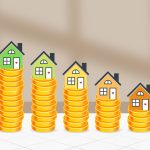
By Jo Haffenden, Impact and Evaluation Manager at the MS Society, @Data_Plus_More on Twitter
Along with discourses of accountability and operational practical monitoring of data, dashboards have emerged. The idea of one-stop shop of knowledge embellishes aspirational thoughts of individuals as active agents that can think critically, make decisions, take control and, of course, improve the way we live and do things by accessing information that empowers. There is an intrinsic appreciation: by understanding the world we can improve the human condition, that is, from a modern optimist view.
This blog is to discuss the use of digital dashboards worldwide, the trend and how the MS Society is also representative if its time.
What is a dashboard?
The concept of dashboard was borrowed from the car industry. Cambridge dictionary defines a dashboard as the ‘part of the car that contains some of the controls used for driving and the devices for measuring speed and distance’. This is in benefit and safety of the passengers and its driver, of course, who is expected to use the dashboard actively and who has been given the trust to manoeuvre the car and avoid risks by making the best possible decisions by accessing timely data. Without steering too far from this dashboard definition, digital dashboards allude to centralised systems which consolidate and display data already being gathered via information systems. Today, digital dashboard technology is available “out-of-the-box” with many software providers as well as organisations still continue to do-in-house development and maintenance of dashboard applications.
In both scenarios dashboards are decision support systems. In both scenarios, they are there to encourage us to proactively use data as a means to develop solutions that work within the context while simultaneously gauging risks.
Digital dashboards provide business intelligence data with visual portals to access patterns and trends required for making adequate decisions. Noah Harari, on his book “Sapiens: A Brief History of Humankind”, reminds us that a person who wishes to influence the decision of governments, organisations and companies must therefore learn to speak in numbers.
Digital dashboards are underpinned on agreed conceptual and strategic frameworks. The data they display already has a pre-empted meaning. They become functional not because they mirror the way things are but because they offer a point of reference in relation to something else, for example an aspiration, a target or general desired goal state.
Symptom of a new Modus Operandi, a new world
Experts do their best to translate even ideas such as ‘poverty’ and ‘happiness’ into numbers (‘the poverty line’, subject wellbeing levels’, ’credit rating’).
The Office of National Statistics (ONS), reminds us that the creation of a national dashboard to represent complex matters, such as well-being, covering a series of different indicators to represent a single outcome, is one of the main recommendations made by the Nobel Prize winner, Joseph Stiglitz et all on their 2018 book “Beyond GDP: Measuring What Counts for Economic and Social Performance”.
One can argue that the development of digital dashboards is a tangible expression of the world getting better, as they are only possible upon the existence of science, reason, humanism and progress. The data can be used as evidence to help to articulate a powerful feeling when something is right or wrong.
There are already some fantastic international examples of dashboards as technological mechanisms of mastery of information. The Sustainable Development Goals initiative, led by United Nations, offers a classic example of how the comparison amongst countries should serve to aspire to improve the world within the established 17 goal domains such as health, education or gender.
In the UK, organisations with or more than 250 employees must report their gender pay gap every year. The government has developed an interactive pay gap dashboard, which made me appreciate the sophistication of some of these apparatus of technology in the UK. I can’t stop thinking about the society we are to become. For now, I see dashboards fulfilling the conceptual understanding of the individual as an active agent with the possibility to engage in the nuances of a world of open, transparent data and yet still to foster competition.
Dashboards at the MS Society
At the MS Society there is a lot happening along this worldwide trend too. The Data and Insight Officer built a dashboard for the Research Networks Volunteers. This team can now access accurate data at any time about who has signed up to the Research Network events and their location.
For the Active Together project being delivered by the Helpline team, I designed in Salesforce a dashboard which the team uses to monitor the service delivery against targets while accessing real live data and service delivery trends. The dashboard also aids the team in decision making, for example, to determine if additional resources are required around supporting the frontline staff members.
Similarly, the Business Intelligence Manager, whose role is completely devoted to developing dashboards at the MS Society, is working with different teams across the organisation developing dashboards that are relevant and meaningful to teams to help them to inform decision making.
It has become evident today’s world impact data trends undoubtedly sit on principles of standardisation, benchmarking, IT Solutions and big data. Imperative for achieving system change. Perhaps that’s a subject for another blog!
[1] Opinions and views are my own and not the views of my employer
How could dashboards transform your organisation?
In our upcoming webinar, Jo will be sharing some top tips on how the MS Society leverage their data to better manage everyday relationships, make informed decisions, and demonstrate accountability to funders and the board. The MS Society worked with our Company to harness the benefit of Salesforce Dashboards.


